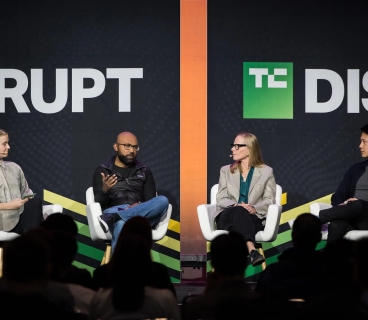It’s a Sunday morning. I’m on the Stanford campus. Students around me, laptops in their hands, eyes full of hope for the future. I’m slowly sipping my coffee… quietly observing. Thinking. Reflecting on the past. With every sip, I ask myself — where did we start, what mistakes did we make, and what messages can we pass on today to young people who want to take their first steps in IT?
“I will learn IT... I’ll get a good salary... my career will quickly advance…”
I have heard these sentences from countless young people in recent years — so many that I’ve lost count. But what happens next? A few months pass, and hope turns into fatigue, confusion, and lack of motivation.
Why?
Because the field we want to learn is vast — IT. But this vastness sometimes overwhelms us. Sometimes we don’t even know where to start. Our biggest mistake is trying to start everything at once. It’s like trying to climb a skyscraper starting in the middle, but there’s no foundation.
If you are interested in this field, know this: the journey is not a one-day sprint — it’s a lifelong journey (exceptions always exist). But believe me, every step you take on this path will make you stronger, more skilled, and freer. Over time, your brain speed will increase, your thinking agility will improve. There will be moments when your calm reaction to someone’s careless comment will impress those around you. As you change, your surroundings will change with you.
If you want to start in this field but have questions like:
“Where should I begin?”
“What should I learn?”
“Why am I not progressing?”
Know that you are not alone. These questions have crossed the minds of hundreds, thousands of people. I’ve been there too. So have the students here. But the difference lies in some running away from these questions, while others face them head-on.
Why do Big Tech Companies prefer technical faculty graduates? Because they know the fundamentals: data structures, algorithms, operating systems, networking, and computer architecture. But don’t worry — even if you didn’t attend a technical faculty, with the right roadmap, you can learn these skills yourself.
Your first steps should be:
systematic learning (a roadmap and discipline)
a mentor (someone to guide you)
motivation (your future is in your hands)
Because success in this field is no accident. It comes from a clear plan, a well-defined roadmap, and patience.
What do fundamentals mean?
Learn English first, then start IT.
Learn Linux, then Docker.
Learn containers, then Kubernetes.
Learn networking, then cloud services.
Learn SQL, then ORM.
Learn REST, then GraphQL.
Learn JavaScript, then React.
Learn Git, then Jenkins.
Learn data structures, then solve Leetcode problems.
…
Never forget:
At every stage, turn what you learn into practical projects. Without a portfolio, you cannot prove what you have learned.
Don’t be afraid to learn. Don’t hesitate to make mistakes. But don’t go without a system. Have a roadmap. Have a goal. Have a mentor. And most importantly — never let your passion for learning die out.
Don’t make changing jobs a habit. Stay in your first or second job for a while, learn, make mistakes, fix them, grow within the team. The resilience and determination you build in this period will give you huge advantages in the future.
Don’t chase becoming a “senior” too quickly. Frequently changing positions and salaries doesn’t make you grow — it keeps you on the surface. Because deep knowledge comes with time, repetition, and responsibility. If you leave every time you face a challenge, you’re just gaining experience, not truly growing through it.
There is no shortcut, only the steady path. If you lay your foundation today, climbing to your desired peak tomorrow will be easier. Those who set off without a roadmap stop quickly. But you, with your roadmap, motivation, and constant learning, will succeed.
This calm morning at Stanford reminded me of something: being in the right environment, breathing the right thoughts, changes a person. Maybe your single step today is the first page that will change your life tomorrow.
“Success is possible only when the foundation is laid correctly.”












